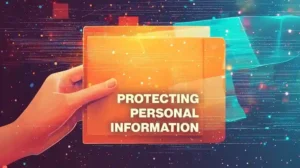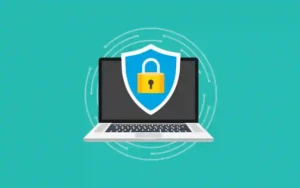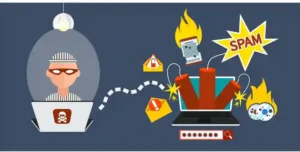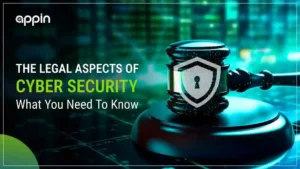Essential Safety and Security Measures for a Safer Living Space

Alright, let’s get down to it: essential safety in your home isn’t something you can ignore, not unless you enjoy living on the edge (and I mean, who does, right?). You can’t exactly lock the door, cross your fingers, and hope for the best—this stuff requires some effort. It’s about setting up defenses, making your home a fortress (okay, maybe not a literal castle, but you get it), and protecting your space from the chaos of the outside world. Whether it’s keeping out unwanted guests or preventing something like a fire or an accident, these measures will give you peace of mind—and, let’s be honest, that’s priceless.
1. Install High-Quality Locks and Deadbolts
You’d be surprised how many people sleep at night thinking the deadbolt they bought for $12 at Walmart is enough. It’s not. The whole point of essential safety starts with locking things down—literally. You can install high-quality locks and deadbolts on your doors and windows to slow down any potential intruders. Think about it: good locks make a world of difference. That extra layer of security? It makes the bad guys rethink their plans, especially when they’re faced with something harder to crack than my 2019 New Year’s resolutions.
My friend Alex learned this the hard way when his place got broken into—he’s still kicking himself for not upgrading those flimsy locks. Don’t be like Alex. If you’re feeling fancy, consider getting smart locks that let you control everything from your phone. So even if you’re on a beach somewhere (lucky you), you’ll still know if someone’s sneaking around your front door.
2. Set Up a Security System
Having a security system? Oh, that’s a no-brainer. And no, I’m not talking about a sticker that says “protected by ADT” on your front window—actual, working systems that can alert you when something’s off. It’s like having an invisible friend who’s always watching, but in a good way.
My first security system was… uh, let’s just say “basic.” I had the cheap version. It beeped like a microwave when something moved. It didn’t detect anything unless you were practically standing on it. But hey, it worked for a while! Anyway, fast forward to now: modern systems are way more advanced. They sync with your phone, send alerts when something shady happens, and can even call the cops if needed. So, yeah, it’s worth investing in.
Plus, it’s nice to have the peace of mind knowing that if anything goes wrong, you’ll be the first to know—before the burglars get all their swag and head off to sell your Xbox on eBay.
3. Proper Lighting and Motion Detectors
Here’s a tip: bad lighting is like an open invitation for trouble. I’m not saying you need to flood your yard with stadium lights, but installing some motion-sensor lights? Total game changer. They’ll turn on at the slightest movement, and let’s just say, anyone up to no good doesn’t like being lit up like a Christmas tree.
The first time I set up motion detectors, I caught my dog staring at one for like 10 minutes. It was kind of hilarious, actually—Baxter (I swear, he’s the dog version of a confused toddler) kept setting off the alarm. Fast-forward to now: motion detectors have saved me more times than I can count, and they’ve been especially useful when I’m traveling. It’s the best way to make sure things look “lived in.” Plus, nothing says “I’m watching” like a light turning on when someone’s too close to your house.
4. Fire and Carbon Monoxide Safety
Now, let’s talk about something serious—like, life-or-death serious. Fire and carbon monoxide. Yeah, that’s where things can get real dicey, real fast. I always used to think smoke detectors were more of a “nice to have” than a “need to have.” Spoiler: they are 100% the latter. You need those things.
Here’s the kicker: carbon monoxide is odorless, colorless, and, well, deadly. So yeah, it’s worth the 50 bucks for a good detector. I learned the hard way when my friend’s apartment had a carbon monoxide leak, and let’s just say things got super sketchy, super quick. Thank God they had a detector! It’s a game changer.
Anyway, get those detectors installed. Test them monthly (it’s not that hard), and replace the batteries at least once a year. Have a fire extinguisher on hand for small flare-ups. Trust me, a little prep goes a long way.
5. Childproofing Your Home
Now, for those of you who are parents—or planning to be—childproofing is not something you can put off. No one wants to explain to their 4-year-old how to avoid falling into a bathtub full of water. So, yeah. Safety gates. Corner protectors. Drawer locks. Just do it.
I still remember the first time I childproofed my house. I thought I had it all figured out—until I found my niece, Emma, perched on top of the fridge trying to raid my cereal stash. So, lesson learned: childproofing is a process. And it’s an ongoing one. Make sure heavy furniture is anchored, cords are out of reach, and that there’s no way little hands can get into stuff they shouldn’t. Trust me, your future self will thank you.
6. Secure Your Outdoor Spaces
You wouldn’t leave your front door wide open, right? Well, guess what? Your yard and outdoor spaces deserve the same level of attention. A fence—seriously, a good fence—is an essential barrier between you and potential problems. Make sure the gates lock, and if you’ve got anything valuable (think bikes, lawn equipment), secure it.
I learned this after a particularly aggressive squirrel raid on my bird feeder. I’m talking about a full-on assault. You think you’re safe because your yard’s big, but nah, all kinds of things can happen when you least expect it.
The key here: make sure your property is as secure as your front door. Not everything needs to be under lock and key, but make it a pain for someone to get in, and they’ll probably take their business elsewhere.
7. Establish Neighborhood Watch Programs
Remember those old-school neighborhood watch signs? Yeah, they’re not just for show. Building a community of neighbors who keep an eye out for each other? Big win. Trust me, you don’t need to be a superhero, but if you can spot weird activity and raise the alarm, your block becomes a lot safer.
Funny thing: I never really got into the whole “neighborhood watch” vibe until my neighbor, Tina, started hosting regular meetings. Now we’re all tight, keeping tabs on each other’s mailboxes and sharing tips on crime prevention. And, honestly? It works. Nothing’s foolproof, but it certainly deters anyone who’s thinking of causing trouble.
8. Keep Personal Information Secure
In an age where we’re all glued to our phones and computers, personal data is prime real estate for thieves. This is why you need to lock up everything—physically and digitally. Secure your Wi-Fi (change that router password, folks), store documents in a safe place, and for the love of your privacy, shred anything with sensitive info.
Honestly, I was one of those people who used to save passwords in my browser (shame). Then, one day, I got an email from a very suspicious source asking me to confirm my Netflix password. Big nope. And that’s when I learned my lesson. Use a password manager, folks. Don’t repeat my mistakes.
9. Keep Emergency Kits and First Aid Supplies Handy
Life happens. Emergencies, accidents, unexpected stuff—it’s all part of the deal. I can’t even count how many times I’ve had to patch up a scrape or dig through the emergency kit for an allergy attack at the worst possible time.
So, yeah, put together an emergency kit. Seriously. Water, food, basic medical supplies. If you’ve got pets, make sure you’ve got their supplies too. I mean, you don’t want to be running around trying to find pet meds when your dog’s choking on a sock, right? I learned this the hard way too.
Conclusion
Taking care of your home and protecting your family is a marathon, not a sprint. It’s easy to ignore small things like locks or emergency kits, but when things go wrong, you’ll wish you hadn’t. The good news is: it doesn’t take a ton of money or effort. A few simple steps, some attention to detail, and a willingness to prepare will go a long way in making your home safer.







